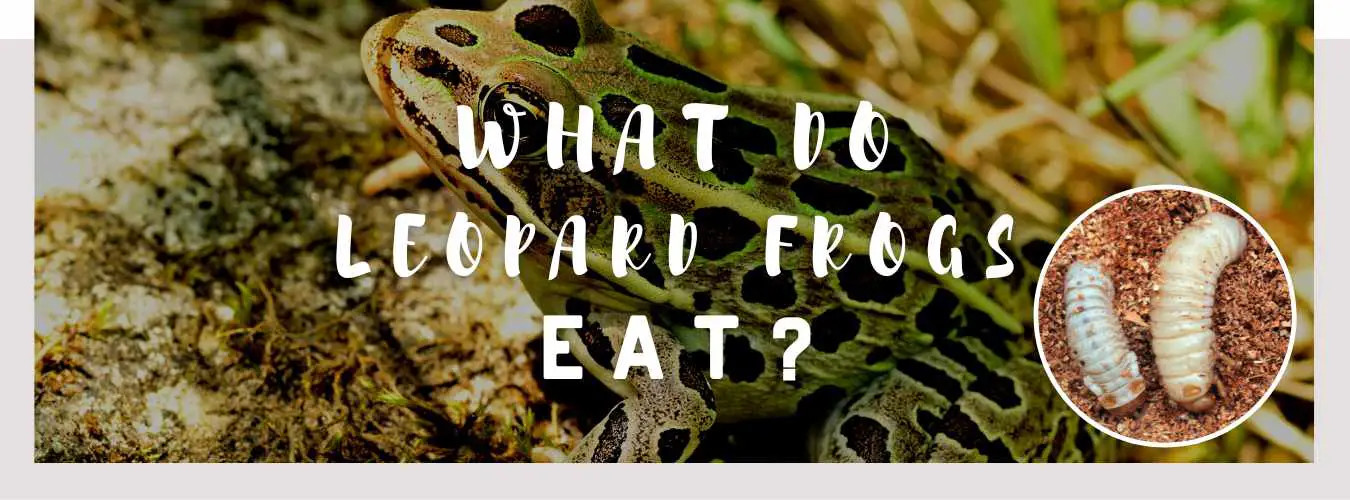
Are you considering bringing home a pet Leopard Frog? Whether it’s your first time as an amphibian owner or you’re just curious about this species, understanding the diet of Leopard Frogs is key to their health and happiness. In this comprehensive guide, we’ll cover what these unique frogs eat in the wild and how to create a nutritious meal for them at home. From live insects to freeze-dried treats, get ready to learn all about feeding your new scaly companion!
Leopard Frogs in the Wild
Leopard frogs are an aquatic species of frog native to North America. They can be found in a variety of habitats from marshes to wooded swamps and even large rivers. Leopard frogs tend to stick close to the water, but they also like areas with plenty of vegetation for cover. As for diet, leopard frogs will eat almost anything that fits into their mouth: insects, worms, tadpoles, and small fish!
Basic Nutrition Requirements for Leopard Frogs
Leopard frogs are carnivorous amphibians that eat a variety of insects and other small invertebrates. To keep them healthy, they require a balanced diet with insects such as crickets and earthworms being the main staples. They should also have an additional source of nutrition like mealworms or wax worms to ensure their dietary needs are met. Supplementing their diet with vitamins is also important for long-term health.
Live Insects as Part of a Balanced Diet
Leopard frogs are known to consume live insects as part of a balanced diet. These frogs are opportunistic predators, and they will consume a wide variety of insects, including grasshoppers, crickets, and flies. Live insects provide the leopard frog with a rich source of protein, essential amino acids, and other nutrients necessary for growth, reproduction, and maintenance of their overall health. In addition, live insects are a source of hydration for leopard frogs, as many insects contain a high water content. Leopard frogs will often wait in vegetation and ambush their prey, using their long, sticky tongues to catch insects as they fly or hop by. While leopard frogs are able to supplement their diet with other prey items, such as small fish or tadpoles, live insects remain an important component of their overall balanced diet.

Commercial Foods for Leopard Frogs
When it comes to feeding leopard frogs, commercial foods are a great option. Pellets and sticks can be found specifically for amphibians or reptiles that are easily digestible and full of the essential vitamins that your frog needs. These should make up the bulk of their diet, with occasional treats like crickets or mealworms to add some variety. Remember to never feed them anything from outside as this could contain parasites or other dangers for your pet frog!
Freeze-dried Treats and Supplements
Leopard frogs can also consume freeze-dried treats and supplements as a way to supplement their diet. Freeze-dried insects, such as crickets and mealworms, are a popular treat for leopard frogs and provide a convenient way to offer a variety of insects without having to store and maintain live prey. Additionally, some freeze-dried supplements are available that provide additional nutrients, such as vitamins and minerals, that may be lacking in a leopard frog’s diet. These supplements can be added to their food or water to ensure that they receive a balanced diet. However, it is important to note that while freeze-dried treats and supplements can be a helpful addition to a leopard frog’s diet, they should not be relied upon as a sole source of nutrition. A varied diet that includes live insects and other prey items is essential for the health and well-being of leopard frogs.

Preparing Meals at Home
Preparing meals at home for leopard frogs can be a rewarding and healthy way to ensure that they receive a balanced diet. Leopard frogs require a diet that is high in protein, and this can be achieved through a variety of prey items, including crickets, mealworms, and waxworms. Preparing meals at home can involve purchasing live prey items and gut-loading them with nutrient-rich food, such as fresh fruits and vegetables, before feeding them to the leopard frogs.
Another option is to purchase commercially available diets that are formulated specifically for leopard frogs. These diets are available in both dry and wet forms and contain a variety of protein sources, vitamins, and minerals. It is important to ensure that any food offered to leopard frogs is appropriately sized and not too large to be swallowed whole, which can cause choking or other digestive issues. Additionally, it is important to maintain clean feeding areas and to ensure that uneaten food is removed promptly to avoid the buildup of bacteria or mold.
Creating Variety with Your Feedings
Creating variety with your feedings is important for leopard frogs to ensure that they receive a balanced diet and to prevent boredom with their food. Leopard frogs are opportunistic predators and can consume a variety of prey items, including insects, small fish, and tadpoles. One way to create variety in their diet is to offer a variety of live insects, such as crickets, mealworms, and waxworms, as well as small fish or tadpoles.
It is also important to vary the sizes of the prey items to ensure that the leopard frog is receiving the appropriate amount of food. In addition, offering a variety of nutrient-rich fruits and vegetables can be a healthy supplement to their diet. Another way to create variety is to offer different types of commercially available diets, such as those formulated specifically for aquatic frogs or those that contain a mix of protein sources. By creating variety in their diet, you can ensure that your leopard frog is receiving the necessary nutrients for their health and well-being.
You might also like: https://whatanimalseat.com/what-do-green-frogs-eat
